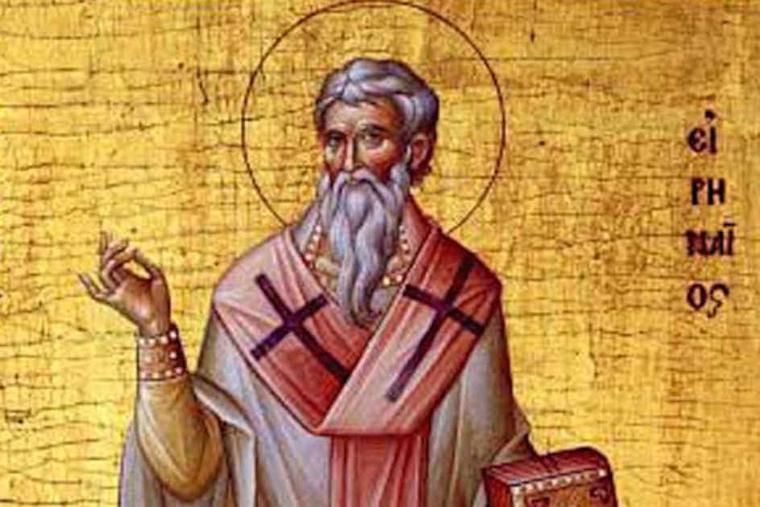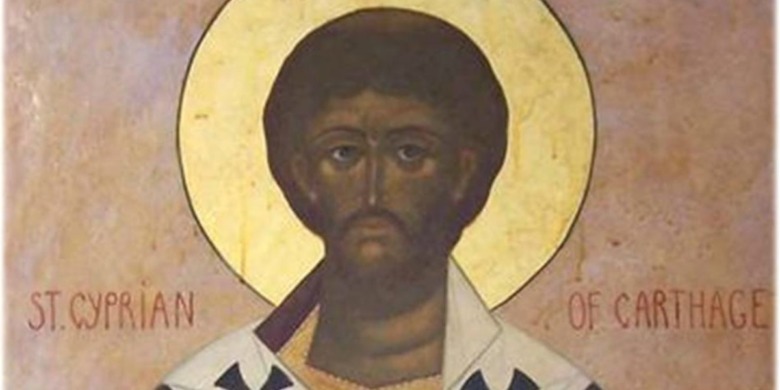Early Church Fathers Thoughts on Gehenna
Introduction
In this concluding blog entry, I intend to examine precisely when and where the concept of hell became connected to Gehenna, in accordance with the early expositors of Christian Scripture. It is essential to understand, however, that many early Christians assumed non-believers found themselves in eternal conscious torment (ECT) in hell both before and after the time of Jesus, who never employed the designation of Gehenna. As a result, ECT did not relate to Gehenna until later, after Jesus’s time. Therefore, this post will outline the journey of Gehenna from the earliest of the church fathers to the time when the Hinnom Valley became tantamount to eternal conscious torment in hell.
Interpreting the Church Fathers
Prior to researching the early church fathers, it ought to be acknowledged from anyone who has read their writings at length that they are not always straightforward and easy to interpret, and they likewise often appear to contradict themselves, even within their very own writings. The early church fathers, alongside biblical authors, did not write in a modern-day, historical-narrative fashion but wrote according to the literary style and techniques standard at the time, which is immensely different than our own. Though reading them will undoubtedly help the individual learn about the early Christian church and what they believed, the modern Christian should likewise remember that not everything the fathers wrote was literal historical fact. It is a concept that Christians today appear to have an extremely challenging time accepting.
For example, in his commentary and translation on the writings of the church father Tertullian of Carthage, the Rev. Alexander Roberts declares,
Our author seems not always consistent with himself in his references to the Places of departed spirits. Kaye thinks he identifies Paradise with the Heaven of the Most High, in one place (the De Exhort. Cast., xiii.) where he probably confuses the Apostle’s ideas, in Galatians. 5:12, and Ephes. 5:5. Commonly…he is not consistent with himself.
Consequently, anyone who researches early Christian doctrine and strongly believes in one side of any given theological issue should be careful not to always claim that “so-and-so believes exactly the same and I do.” Frequently, contemporary Christians place church fathers into specific camps and claim that the early church theologians were as dogmatic about an issue as we are today. However, they were not always evident in their writings and occasionally left the reader a bit more confused than before (especially today’s readers). As with anything, particularly with second and third-century theologians, we ought to consider their ideas and suggestions with a healthy amount of skepticism while realizing that context provides a superior method to interpreting their words, just as it does for the biblical authors.
Origination of Gehenna as Eternal Conscious Torment
Numerous contemporary Christians assume belief in Gehenna as “hell” to be a foregone conclusion since Jesus obviously declared it to be so. However, upon closer examination of the earliest interpreters of Christian Scripture, it appears not to be as apparent as many modern expositors think until much later than Jesus’s ministry. Here, we will assess the earliest writers of Christianity to see precisely how they viewed the New Testament concept of Gehenna.
Justin Martyr
The first conclusive and definitive reference to Gehenna after the NT comes from the second-century apologist Just Martyr (c. AD 100 – c. AD 165). Justin was born around the turn of the second century and was originally from a pagan, Greek-speaking culture. That is very significant because he knew practically nothing about the Hebrew or Aramaic language and was unfamiliar with ancient Jewish culture. Justin was, however, an avid learner and sought out many different schools and teachers to search for an answer to attempt to explain the existence of God. In addition, he attended several other theological schools, eventually settling on the teachings of the ancient Greek philosopher Plato, called Platonism.
It was not until some time later that he allegedly met a man near a seashore named Trypho. Scholars are divided as to whether this conversation actually took place or if Trypho was even an actual individual. Nonetheless, Justin’s supposed written conversation recounts his conversion to Christianity and committing his life to spread the Gospel of Christ. This brief background information of Justin’s heritage derived from paganism raises a few questions about his proper understanding of Christianity, especially concerning the concept of hell. For example, when Justin read through the NT, did he accurately recognize the cultural significance of Jesus’s words? Jesus quoted from the OT numerous times; therefore, a proper understanding of what Jesus said in context requires one to be incredibly familiar with Jewish culture and the Judaic religion. Was Justin competent enough to fully grasp the significance of Jesus’s words and parables since they are all culturally bound? It is hard to say one way or another, but it should at least offer caution to anyone interpreting Justin’s take on OT concepts quoted in the NT.

The reason for mentioning Justin’s background here is noteworthy in the Gehenna debate because, as may seem obvious to anyone who has studied the Hinnom Valley, a thorough understanding of all the background information of that particular valley and how it precisely relates to Jesus’s claims is crucial. For example, the first time Justin writes about Gehenna, he further clarifies Jesus’s words about destroying both “body and soul” in Gehenna from Matt. 10:28,
And that it is better to believe even what is impossible to our own nature and to men, than to be unbelieving like the rest of the world, we have learned; for we know that our Master Jesus Christ said, that “what is impossible with men is possible with God,” and, “Fear not them that kill you, and after that can do no more; but fear Him who after death is able to cast both soul and body into hell (Gehenna).” And hell (Gehenna) is a place where those are to be punished who have lived wickedly, and who do not believe that those things which God has taught us by Christ will come to pass.
Justin: ECT or Annihilationism?
Though this quote from Justin at first may seem an apparent reference to the traditional view of hell, it is, in reality, a defense of annihilationism. Most, though certainly not all, annihilationists believe that Gehenna is the place where God will annihilate non-Christians, not eternally torment them after the final judgment. On the Rethinking Hell website, which is the best source for information regarding annihilationism (AKA conditional immortality), one of the authors wrote an article called “Gehenna: The History, Development, and Usage of a Common Image for Hell” (link for the article is HERE). The article’s author writes, “The unified understanding of Gehenna in the NT is that it is the location where the wicked are punished after the final resurrection.” When annihilationists discuss punishment, or the similar phrase “eternal punishment,” they agree that non-Christians will be eternally punished, but that punishment is death and not an endless, ongoing punishment that lasts for eternity. In their view, the punishment is dying, and that punishment will last for eternity. Therefore, “eternal punishment” of non-Christians, in the opinion of most annihilationists, is a correct statement. The quote above by Justin appears to support the view of annihilation.
The only other place Justin writes about Gehenna is in his Dialogue with Trypho. In that text, he refers this time to Matthew 23:15 and writes,
“You think that these words refer to the stranger and the proselytes, but in fact they refer to us who have been illumined by Jesus. For Christ would have borne witness even to them; but now you are become twofold more the children of hell (Gehenna), as He said Himself.”
Again, this does not appear to suggest anything close to eternal torment in hell. The English word “hell” is placed here by the translators and therefore has all the cultural baggage associated with “hell” rather than simply Gehenna and what that particular image would arouse in the original audience. Though there may be other areas where Justin indicates ECT, or other language consistent with the traditional view of hell, his writings do not appear to support an association with eternal torment and Gehenna.
Conclusions about Justin
Out of the three specific mentions of the Greek word Gehenna, two are direct quotes from a particular passage in the NT. At the same time, the only other one expounds a bit on Matt 23:15, which appears to support the view of annihilationism. On the other hand, it is easy to see how Justin’s writings and support of annihilation could be viewed by other church fathers who come after him, to indicate a literal hell of eternal torment for non-Christians after death if they likewise did not comprehend entirely the cultural significance and context surrounding the Hinnom Valley.
Irenaeus of Lyons
Irenaeus of Lyons (c. 130 – c. 202 AD) was a Greek bishop in what is now modern France. It is claimed that Irenaeus was a student of Polycarp, who himself was a student of the Apostle John. Therefore, Irenaeus may well have been a second-generation student from one of the original twelve disciples. He is highly renowned for his work Against Heresies, which is a 5-volume treatise against Gnosticism because the Gnostics were becoming more and more widespread during his period. His work is still utilized today in seminaries worldwide to explain early Christian thought concerning the rise of Gnosticism and the heresies associated with it along with what is regarded as genuine Christian orthodoxy.
Gehenna and the Lake of Fire
Even though Irenaeus was a prevalent writer and composed a significant number of theological works, he only references Gehenna twice. As I have previously mentioned in previous blog entries, if the concept of “hell” is the primary emphasis of Christianity and that Jesus came to save everyone from Gehenna, then why is it so seldomly, if ever, discussed in the early church? In any case, the first reference to Gehenna from the renowned church father is an explanation of Revelation in his work Against Heresies 5.35.2, which states
“The sea,” he says, “gave up the dead which it had in it, and death and hell (Hades) delivered up the dead that they contained; and the books were opened. Moreover,” he says, “the book of life was opened, and the dead were judged out of those things that were written in the books, according to their works; and death and hell (Hades) were sent into the lake of fire, the second death.” Now this is what is called Gehenna, which the Lord styled eternal fire.6 “And if anyone,” it is said, “was not found written in the book of life, he was sent into the lake of fire.
This commentary on Revelation is likewise the first time anyone cites Gehenna as being associated with the Lake of Fire in Revelation. Irenaeus appears to presume that Gehenna, eternal fire, and the Lake of Fire are all similar expressions suggesting the same thing. The evolution of thought concerning Gehenna can be observed here as it takes Justin’s view and escalates it with other biblical terms for punishment, which are repeatedly seen as support of eternal torment. However, the Lake of Fire is not always understood to be equivalent to ECT. I wrote a paper on this specific subject in grad school and uploaded it on my website HERE. But the Lake of Fire does not conclusively support the doctrine of ECT.

The only other mention from Irenaeus is a quotation from Jesus, identical to Justin, concerning Matt. 10:28. In the chapter on his defense against Gnostics about God and Christ being the same entity, Irenaeus says
For this purpose did He give them this exhortation: “Fear not them which kill the body, but are not able to kill the soul; but rather fear Him who is able to send both soul and body into hell (Gehenna);” [thus exhorting them] to hold fast those professions of faith which they had made in reference to Him.
Conclusion about Irenaeus
Again, reminiscent of Justin’s excerpt of the identical verse, there is nothing explicitly clear in Irenaeus’s writing to suggest that eternal torment occurring in Gehenna was the point of view he espoused. Admittedly, though, it is possible he did; it just does not appear to be a strong and well-defined case. On the other hand, an intriguing observation from the annihilationist viewpoint portrays a robust defense of Irenaeus supporting the theory of annihilationism. An excellent article about that can be found HERE. Regardless of which view Irenaeus supports, it appears that this may be the birthing pangs of Gehenna equating with eternal torment. Did Irenaeus believe in the eternal conscious torment of souls? While I do not have the space for a defense of his view of hell, my concern is explicitly with how he perceived Gehenna. As a result, it appears that, at most, we can say irrefutably and without question about Irenaeus is that his ideas may have guided others to the concept of Gehenna being comparable to eternal torment in the afterlife for non-Christians.
Tertullian of Carthage
It is frequently agreed among those who investigate the issue of hell that Tertullian of Carthage is the one who conclusively brought eternal conscious torment into Christianity in the late 2nd, and early 3rd century CE and made it an “obvious” Christian doctrine. Much of Tertullian’s life is unknown or unclear, though scholars are confident about a few aspects of his life derived from his own writings. Tertullian was born and raised a Pagan and had a conversion experience later in life. Certain sources believe he was around 40 years old at the time of his conversion to Christianity, though it is, again, unclear. He was likewise a native Latin speaker but learned and subsequently wrote three books in the Greek language. Therefore, while not a native Greek speaker, he did possess a good, working knowledge of the original language of the NT. As a result, his interpretation that scripture supports ECT is not without merit.
Tertullian Relishes Hell
Concerning his belief in ECT, however, his most infamous example originates from his writing called De Spectaculis, chapter XXX. In this essay, he writes about the excitement of imagining his enemies and those who persecuted Christians being tormented forever when he boldly proclaims,
Yes, and there are other sights: that last day of judgment, with its everlasting issues…shall be consumed in one great flame! How vast a spectacle then bursts upon the eye! What there excites my admiration? What my derision? Which sight gives me joy? Which rouses me to exultation? — as I see so many illustrious monarchs…groaning now in the lowest darkness with great Jove himself, and those, too…who persecuted the Christian name, in fires more fierce than those with which in the days of their pride they raged against the followers of Christ.
That assertion, among several others that he writes, makes it quite apparent that he believed in ECT. Much like Irenaeus, Tertullian equated much of the biblical language of death, eternal fire, eternal punishment, and Hades with other language such as Gehenna. But did Tertullian, a Latin-speaking pagan until a mid-life conversion, honestly comprehend the background concept of Gehenna?

As previously acknowledged, anyone without a thorough Jewish background might miss the cultural significance and reputation of the Hinnom Valley among the first-century Jews. Tertullian does not appear to ever refer to the geographical valley itself or anything that took place within its borders during OT times, rendering his comprehension of the context surrounding the events in that place seven centuries prior to his writings questionable. Nevertheless, he does write about Gehenna—though not as much as one may think.
The Apology
In Tertullian’s The Apology, Ch. 47, written between 197-202 CE, he describes what he believes Gehenna to be when he declares,
“For, like us, the poets and philosophers set up a judgment-seat in the realms below. And if we threaten Gehenna, which is a reservoir of secret fire under the earth for purposes of punishment, we have in the same way derision heaped on us. For so, too, they have their Pyriphlegethon, a river of flame in the regions of the dead.”
The river Pyriphlegethon (AKA Phlegethon) is the river of fire that resides within Hades in Greek mythology. He is therefore comparing the Greek mythological river of fire in the underworld with the fires of Gehenna. As a one-time pagan and lifelong Latin-speaking Gentile from Northern Africa, Tertullian obviously misses the contextual significance of the Hinnom Valley from Jewish culture and instead connects Gehenna to a river of fire, much like Irenaeus and the Lake of Fire in Revelation. It seems apparent, however, that Tertullian undoubtedly believed in ECT. It is likewise evident that by examining all of his writings, he thought ECT occurred in Gehenna.
Matthew 10:28
That is equally apparent when he further clarifies his comments about Gehenna being equal to ECT several times, especially in his numerous discourses on Matthew 10:28 (Fear him who can kill both body and soul in Gehenna). Though this may be a slightly lengthier quote, it certainly underscores his belief in the reality of ECT and Gehenna. In his work titled On the Resurrection of the Flesh, the early church father writes about Matthew 10:28,
For since both substances are set before us (in this passage, which affirms) that “body and soul” are destroyed in hell (Gehenna), a distinction is obviously made between the two; and we are left to understand the body to be that which is tangible to us, that is, the flesh, which, as it will be destroyed in hell (Gehenna)—since it did not “rather fear” being destroyed by God—so also will it be restored to life eternal, since it preferred to be killed by human hands. If, therefore, any one shall violently suppose that the destruction of the soul and the flesh in hell (Gehenna) amounts to a final annihilation of the two substances, and not to their penal treatment (as if they were to be consumed, not punished), let him recollect that the fire of hell (Gehenna) is eternal—expressly announced as an everlasting penalty; and let him then admit that it is from this circumstance that this never-ending “killing” is more formidable than a merely human murder, which is only temporal.
Conclusion about Tertullian
That commentary indicates Tertullian believed Gehenna to be the place of “everlasting penalty” and the place where the “fire of hell is eternal.” Certainty in Gehenna being the place of eternal punishment, therefore, was passed along to his student, Cyprian of Carthage (c. 210-258). Cyprian took the idea of eternal punishment in Gehenna to a different level, with numerous quotes about it being identical to ECT. For example, in his epistle, An Address to Demetrianus, he writes, “An ever-burning Gehenna will burn up the condemned, and a punishment devouring with living flames; nor will there be any source whence at any time they may have either respite or end to their torments.”
Cyprian’s declarations about Gehenna being equal to ECT are numerous and prevalent throughout his writings. Though Tertullian may have been reasonably clear that he unites the two concepts, Cyprian leaves no doubt that Gehenna is the place of fire under the earth where non-Christians are tormented for eternity.

Consequently, it can be conclusively and unambiguously stated that Cyprian took hold of the idea of Gehenna as never-ceasing torments of hell. From here, the renowned St. Augustine (among many others) appropriated Cyprian’s doctrines of eternal conscious torment, specifically in Gehenna, and commercialized it into an ideology that became a standard doctrinal belief in the catholic (universal) church and remains to this day.
Conclusion
Though the concept of ECT is absolutely prevalent in early Christian thought, as evidenced by several earlier non-canonical writings and early church fathers, it is not clear that Gehenna was always perceived in the same manner. Admittedly, there is a slight possibility that Gehenna meant “hell” only 75 years after Christ. Though it appears that it is not entirely certain until the beginning of the 3rd century. Therefore, for a contemporary believer in the teachings of Jesus to conclusively declare that he taught eternal torment in Gehenna for individuals who did not believe in him and that his teachings are “clear” is to miss much of the context surrounding his speeches to the disciples and Pharisees in the early first century. There is much more happening contextually than a simple, straightforward comprehension of Jewish Scripture seen through a modern lens. The church fathers built upon each other and further developed their predecessors’ ideas and opinions. That appears to be when the evolution of Gehenna took shape as a place where the souls of individuals went to be punished by being perpetually burned for eternity for not being Christians.
Previous blog post on Non-Canonical Literture about Gehenna HERE
Next blog post on 3 Burning Questions about Gehenna HERE
Sources for further reading:
Justin Martyr, “The First Apology of Justin”
Irenaeus of Lyons, “Irenaeus against Heresies”
Tertullian, “The Apology”
Tertullian, “On the Resurrection of the Flesh”
Cyprian of Carthage, “An Address to Demetrianus”
RethinkingHell.com


